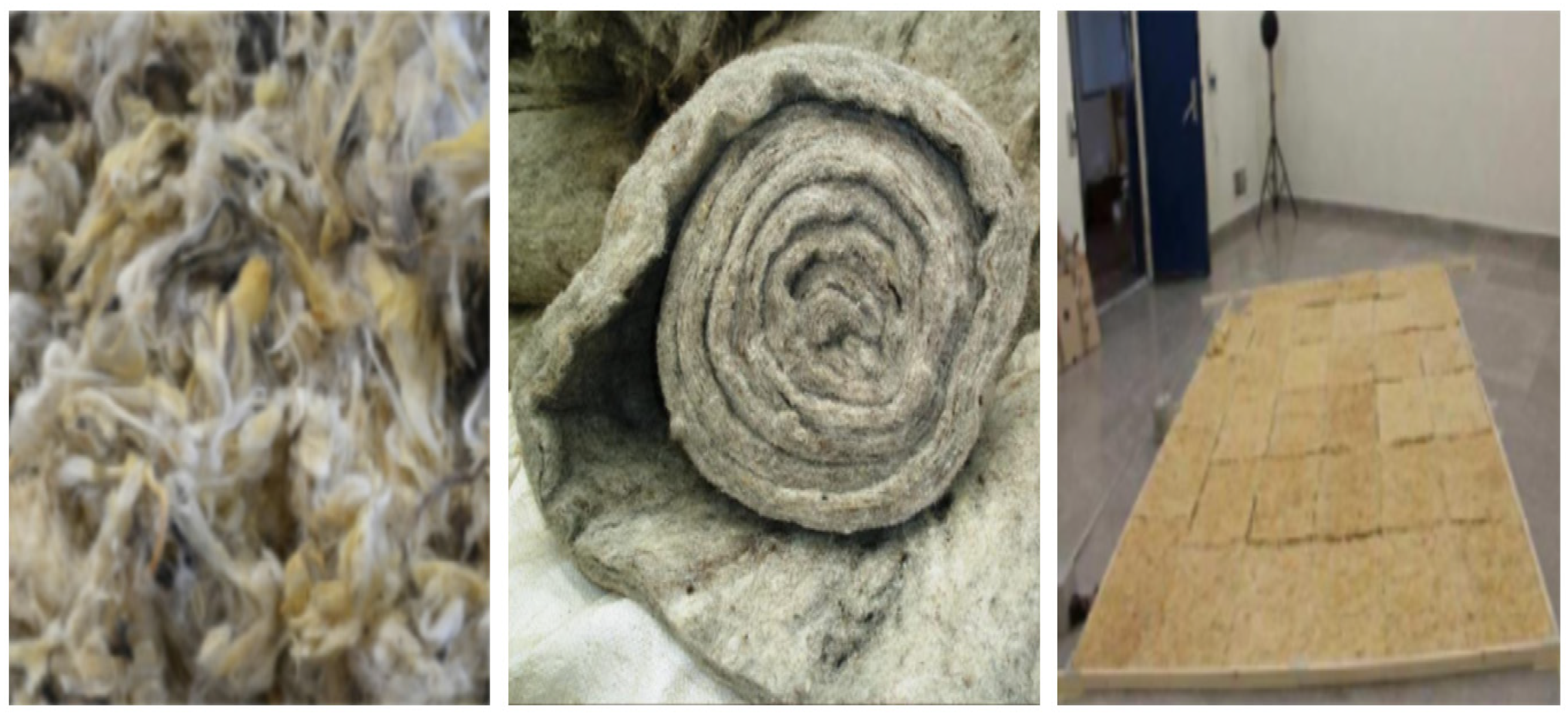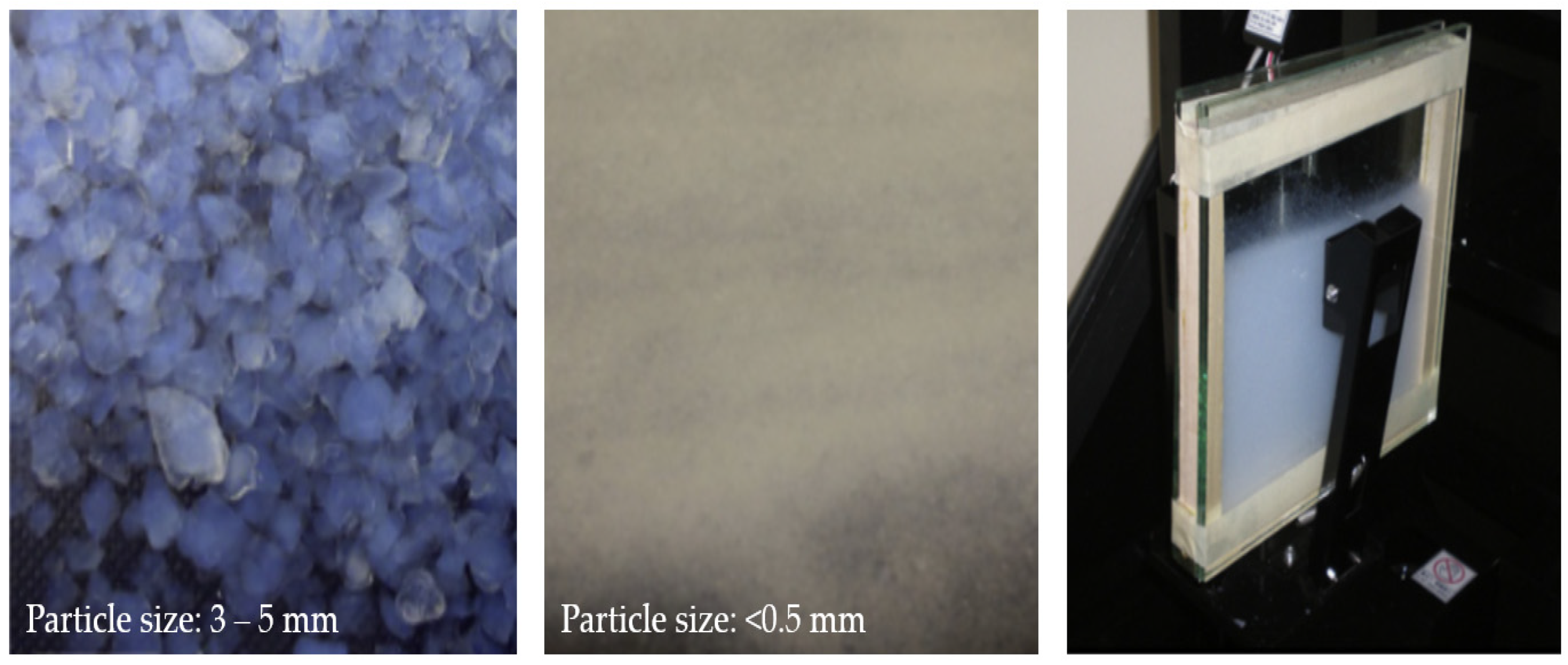Your browser does not fully support modern features. Please upgrade for a smoother experience.

Submitted Successfully!
Thank you for your contribution! You can also upload a video entry or images related to this topic.
For video creation, please contact our Academic Video Service.
| Version | Summary | Created by | Modification | Content Size | Created at | Operation |
|---|---|---|---|---|---|---|
| 1 | Seyedmostafa Mousavi | -- | 3855 | 2023-01-10 06:26:52 | | | |
| 2 | Conner Chen | Meta information modification | 3855 | 2023-01-11 03:31:01 | | |
Video Upload Options
We provide professional Academic Video Service to translate complex research into visually appealing presentations. Would you like to try it?
Cite
If you have any further questions, please contact Encyclopedia Editorial Office.
Dong, Y.; Kong, J.; Mousavi, S.; Rismanchi, B.; Yap, P. Types of Insulation Materials. Encyclopedia. Available online: https://encyclopedia.pub/entry/39938 (accessed on 14 January 2026).
Dong Y, Kong J, Mousavi S, Rismanchi B, Yap P. Types of Insulation Materials. Encyclopedia. Available at: https://encyclopedia.pub/entry/39938. Accessed January 14, 2026.
Dong, Yitong, Jiashu Kong, Seyedmostafa Mousavi, Behzad Rismanchi, Pow-Seng Yap. "Types of Insulation Materials" Encyclopedia, https://encyclopedia.pub/entry/39938 (accessed January 14, 2026).
Dong, Y., Kong, J., Mousavi, S., Rismanchi, B., & Yap, P. (2023, January 10). Types of Insulation Materials. In Encyclopedia. https://encyclopedia.pub/entry/39938
Dong, Yitong, et al. "Types of Insulation Materials." Encyclopedia. Web. 10 January, 2023.
Copy Citation
Insulation materials are classified into three main categories depending on material composition, material technology, and material sustainability index.
exterior wall insulation
building material
climate zones
1. Inorganic Insulation Materials
1.1. Inorganic Fibrous
Glass, rock, and slag wool are all fibrous elements that belong to mineral wool [1]. Fibrous insulation materials are made using crushed rock, quartz sand, diabase, and basalt [2]. Glass wool and rock wool are categorised as inorganic fibrous materials. Glass wool is made by mixing natural sand and (typically recycled) glass at temperatures ranging from 1300 °C to 1450 °C [3]. Fibre transformation then takes place through centrifugation and blowing. The fibres are finally held and stabilised using resin [3][4]. Rock wool is also formed using fibres made by melting stone (e.g., diabase and dolerite) at around 1500 °C and flinging the hot molten material out of a wheel or disc.
Figure 1 shows mineral wool in microscopic and close-up views. Mineral wool has a thermal conductivity of 0.030–0.040 W/m·K, while glass wool and rock wool offer a thermal conductivity of 0.030–0.046 and 0.033–0.046 W/m·K, respectively [5]. The thermal insulation performance of glass and rock wool materials will not be affected by ambient temperature and humidity [3][6]; however, these variables change mineral wool’s thermal conductivity. If the moisture content of mineral wool is increased from 0% to 10%, the thermal conductivity is raised from 0.037 m·K to 0.055 m·K [7]. In real applications, mineral wool rods that are lighter and softer are used to frame cavities in other building structures [7], while denser, more complicated mineral wool panels are utilised for floors, walls, and roofs [2]. Glass wool can typically be used as thermal insulation material when the need for heat resistance is not great (for example, the roof of a factory building), but rock wool is usually a more sensible choice for large heat insulation requirements [2][7][8]. The literature reveals that the inorganic fibrous material is non-rotting, exhibits good high-temperature resilience, and has high levels of hygroscopicity. However, they are still quite expensive in the market today.
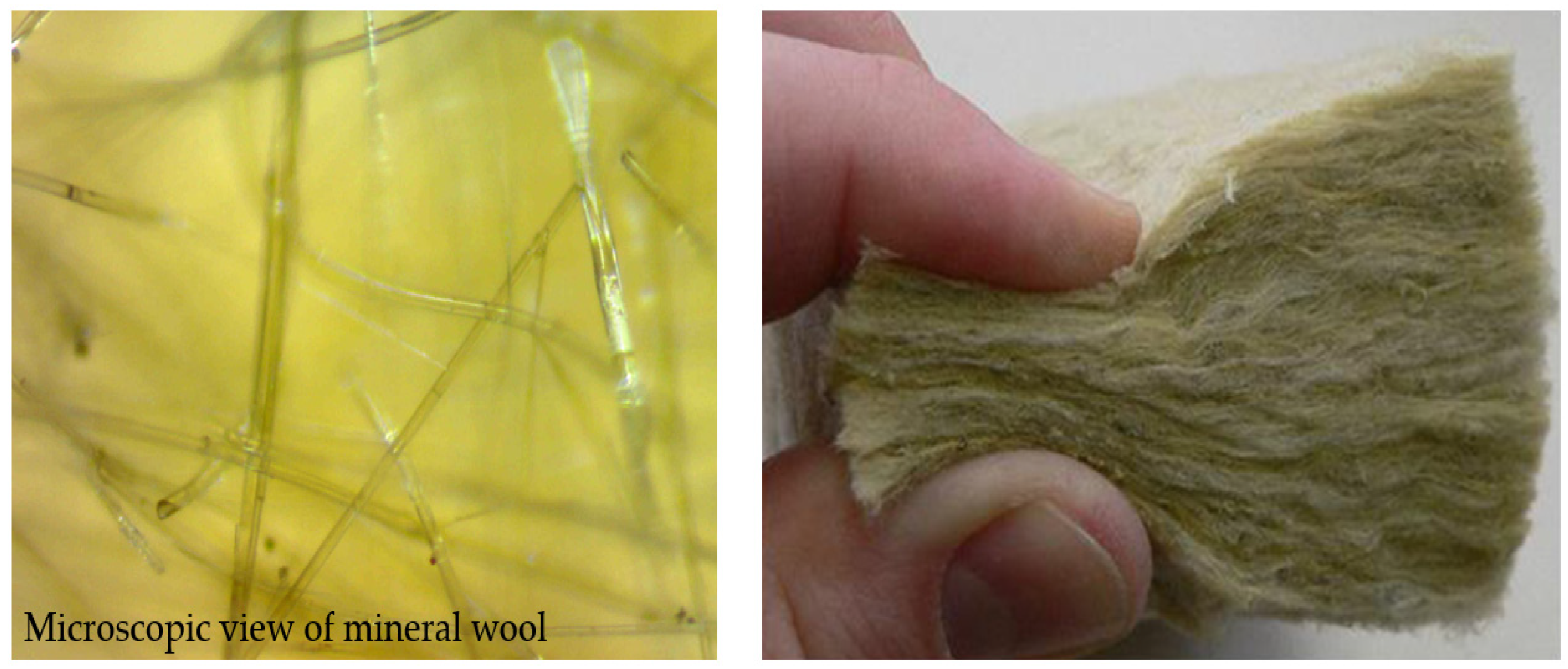
Figure 1. A microscopic view and close-up of mineral wool [9].
2.1.2. Cellular
Calcium silicate, foam glass, perlite, and vermiculite are examples of inorganic porous insulating materials [2]. The main components of these materials include sand, cellulose fibres, shattered glass, dolomite, oxides (e.g., aluminium and silicon), and magnesium–aluminium silicates. The large porosity of foam insulators reduces mechanical strength while increasing hygroscopicity, resulting in low heat conductivity [7].
At room temperature, the thermal conductivity of foam is around 0.12 W/m·K (with a density of 100 kg/m3), which is larger than those of other fibre insulation materials [5]. Furthermore, this thermal conductivity is highly influenced by thermal radiation. According to results reported by Zukowski and Haese [10], incorporating perlite into the pores of porous insulating materials reduces heat conductivity. Gao et al. [11] introduced a new foam insulating material made of perlite/sodium silicate, H2O2, hexyl trimethyl ammonium bromide, and rock wool. Their foam insulator is lighter than conventional inorganic materials, has a low heat conductivity, and is mechanically durable. However, despite being a lightweight material, it lacks structural rigidity, making it unsuitable for use in enclosure structures that are subjected to vibration.
2. Organic Insulation Materials
2.1. Polystyrene
Polystyrene products are made from organic foam plastic. As an insulation material, polystyrene is commercially available in two forms: expanded polystyrene and extruded polystyrene [7].
-
Expanded polystyrene (EPS)
Expanded polystyrene foam (EPS) is commonly made by evaporating pentane into polystyrene particles. This technique can produce white, rigid closed-cell foam. The specific heat of EPS materials is around 1.25 kJ/kg·K, and their thermal conductivity and density range from 0.031 to 0.037 W/m·K and 15 to 75 kg/m3, respectively. The higher the density of EPS insulation material is, the better the insulation effect will be [4]. Additionally, as Lakatos et al. [12] confirmed, the thermal conductivity of EPS materials will be affected by humidity. They showed that if EPS material is kept dry for four hours in a climate chamber with a relative humidity of 90%, its thermal conductivity will decrease by 2.1%.
EPS material, on the other hand, is of closed porosity, low density, and no apparent acoustic qualities. Due to the high flammability of these materials, flame retardants are frequently added to their production process. EPS materials can be used for a variety of purposes, like packaging (Figure 2) and structure insulation [7][13]. The advantages of the EPS insulation board over commercially available inorganic active insulation mortar and foam glass include low thermal conductivity and a significant heat storage coefficient. However, because it is an organic material, the fireproof performance is a key point that needs to be paid attention to. Several manufacturers developed enhanced fireproof EPS boards, but the cost is relatively high. Moreover, EPS is extremely tough to degrade, and recycling EPS is problematic.
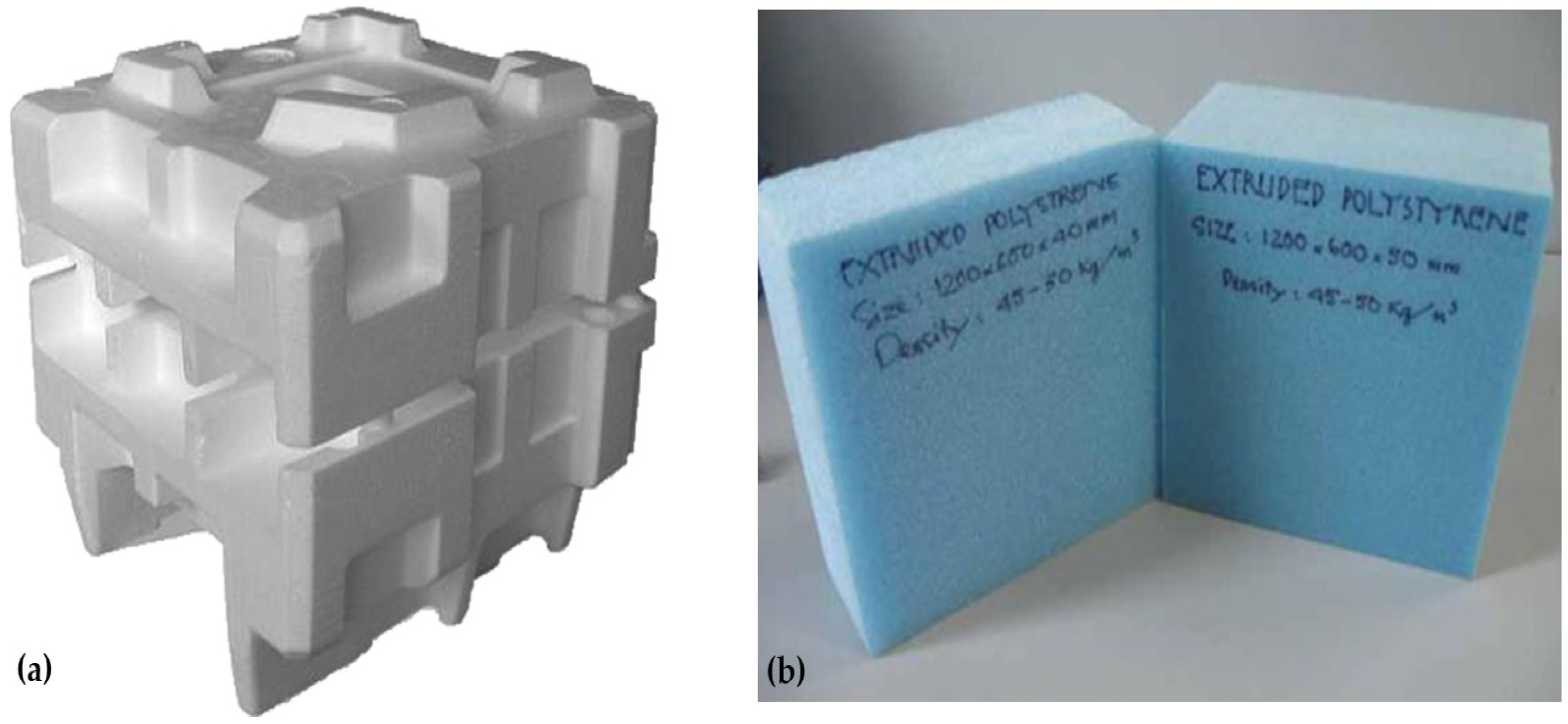
Figure 2. (a) EPS material used for packaging, and (b) XPS insulation material [9].
-
Extruded polystyrene (XPS)
In the extrusion process, through which XPS is made, polystyrene particles are melted in an extruder and mixed with key additives, and the mixture then expands when cooling [14]. The thermal conductivity of XPS is typically between 0.025 and 0.035 W/m·K [5]. The thermal conductivity of XPS varies with temperature, moisture content, and density. It is shown that XPS thermal conductivity increases from 0.034 W/m·K to 0.044 W/m·K as the water content grows from 0% to 10% [7]. XPS insulation materials can be installed on and removed from a range of building structures without impacting their heat resistance [15]. While XPS has similar insulating qualities to EPS, it absorbs less moisture (0.3% vs. 2–4%) and poses a higher specific heat (1.3–1.7 kJ/kg·K). However, XPS usually costs 10–30% more than EPS [3]. XPS is practically identical to EPS, both of which are the most widely used insulation materials. However, they are not yet environmentally friendly materials, and planning a successful treatment strategy for recycling is challenging.
2.2. Polyurethane (PUR)
Polyurethane (PUR) and polyisocyanurates are produced when isocyanates and polyols react [2]. PUR has a thermal conductivity of 0.02 to 0.03 W/m·K, which is significantly lower than mineral wool, polystyrene, and cellulose products [15]. The thermal conductivity of PUR is affected by changes in temperature, moisture content, and mass density; The thermal conductivity is increased from 0.025 to 0.046 W/m·K as the moisture content grows from 0% to 10% [7]. In addition, PUR’s thermal conductivity follows a decreasing trend when the cell size decreases [7][16].
Polyurethane can be employed to make panels and pipe fittings, as well as expanded into the foam to be used in buildings (for sealing doors and windows, and filling voids and spaces [3][7]. It is worth mentioning that even if PUR is safe in its intended applications, it can pose serious health concerns in the case of a fire. When PUR burns, highly hazardous hydrogen cyanide (HCN) and isocyanates are released [15]. Compared to other organic materials, the key benefit of PUR insulation boards (Figure 3) is their high structural strength. Yet, same as other organic material insulation boards, these have weak flame retardancy and low recycling rates.
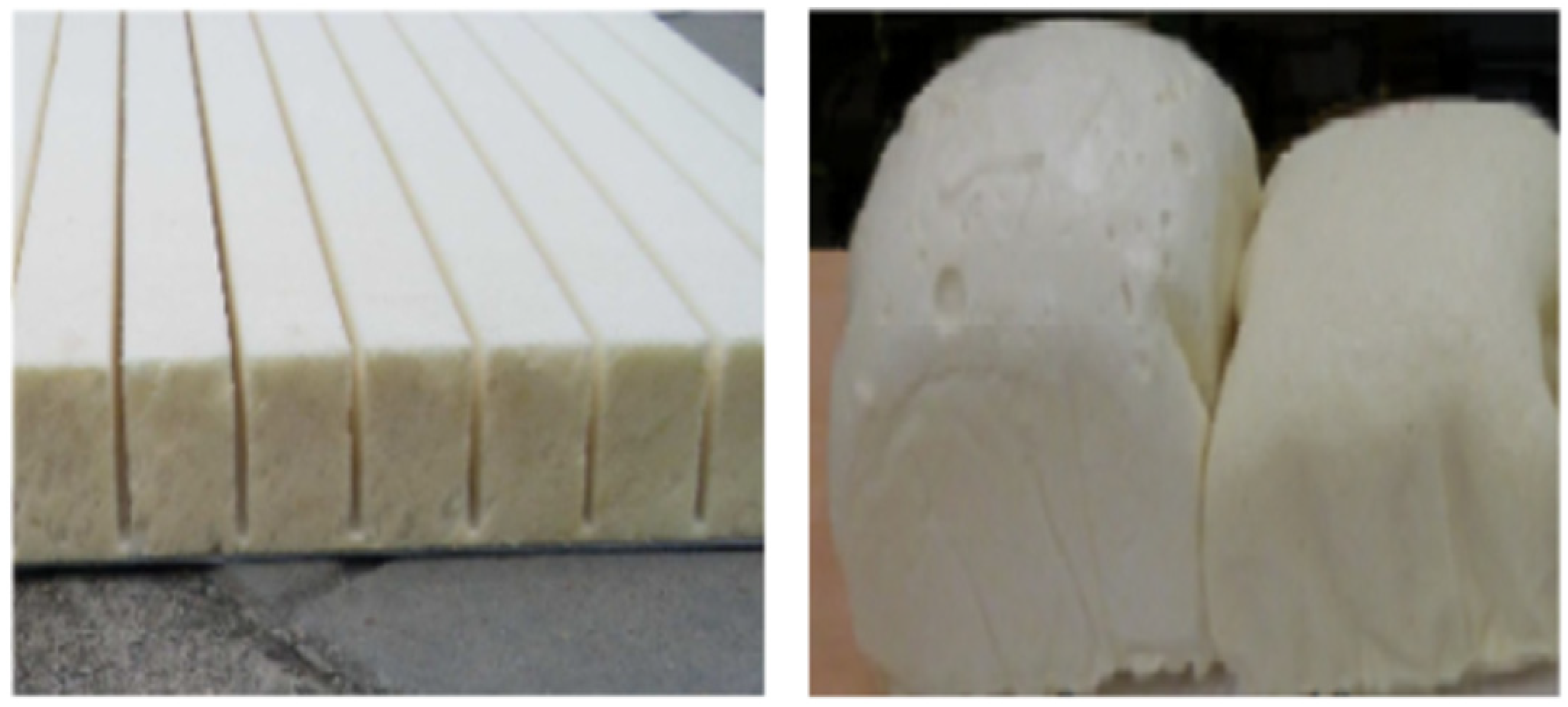
Figure 3. PUR insulation foam [7].
2.3. Cork
Cork thermal insulation is primarily made from cork oak. The thermal conductivity, density, and specific heat of cork material are in the range of 0.037–0.050 W/m·K, 110–170 kg/m3, and 1.5–1.7 kJ/kg·K, respectively. Without affecting their thermal resistance, cork insulation products can be punctured, trimmed, and adjusted on the job site [15]. Materials consisting of cork particles are of good acoustic characteristics, like thermal shock insulation, air isolation, and sound absorption [17]. Softwood applications are ideal insulation materials under compression pressures due to their low thermal conductivity and high compressive strength. Cork oak is widely used in buildings because of its thermal and acoustic properties. It can be used either as a filler or a sheet [7]. Compared to the aforementioned organic materials, the recycling performance of cork materials is more effective. Considering the sustainable development of buildings, materials such as cork should gradually replace polymer materials that are difficult to degrade.
2.4. Organic Fibrous
-
Cellulose
Cellulose is formulated using recycled paper, wood fibre, and boric acid to improve its thermal characteristics [18]. These components can also enhance its pest, fire, and corrosion resistance [3].
Cellulose has a thermal conductivity of 0.037 and 0.042 W/m·K, a density of 30 to 80 kg/m3, and specific heat of between 1.3 and 1.6 kJ/kg·K. The thermal performance of cellulose can be influenced by the quality of the source newsprint [19]. Additionally, the thermal conductivity can be improved by increasing the moisture content from 0% to 5%, yielding 0.040 W/m·K and 0.066 W/m·K, respectively [7].
Cellulose insulation products can be perforated, trimmed, and modified on the job site without losing their thermal resistance [15]. Acoustically, if cellulose panels are utilised, their elasticity can be used as a floating floor elastic material, while the porosity and flow resistivity values are sufficient for sound absorption and cavity insulation [17]. Cellulose is commercially used to fill cavities, cardboard, and envelope liners [18]. Although cellulose panels and matting are produced by manufacturers, loose cellulose that can be blown into wall cavities is more widely available [3]. Cellulose can be used as a sustainable material when compared to organic polymer materials. Its improved workability should also be taken into consideration. However, more research is required on the durability aspect, since durability is the central argument against replacing EPS and XPS with new materials.
-
Sheep Wool Insulation Materials
Sheep wool is a widely-used material in the garment and textile industries. However, a large amount of wool from coarse or semi-coarse sheep (dairy sheep) bred in southern Europe and Mediterranean countries is of poor textile quality. Therefore, it is recommended to use wools as sustainable insulation materials for buildings [20]. Figure 4 indicates sheep wool material and its applications in buildings.
Semitekolos et al. [20] analysed a composite insulation that is made of epoxy resin and wool. Compared with pure epoxy resin, the thermal conductivity of their composite is reduced by 30%, demonstrating that wool fibre-epoxy resin composite might be considered a potential insulating material while also utilising natural waste. Iacob Florea et al. [21] investigated a new insulation material made of natural fibres, wool, and hemp. The experimental results showed that sheep wool materials provide better insulation than currently available materials, resulting in increased building energy efficiency. A study by Azra Korjenic et al. [22] found that the thermal insulation performance of pure wool as an internal insulation layer for façades is comparable to mineral wool and calcium silicate.
3. State-of-the-Art Insulation Materials
3.1. Transparent Insulation Materials (TIMs)
All transparent insulation materials (TIMs) can be categorised as solar collectors since they absorb solar energy while also providing insulation to prevent heat loss [23]. TIMS, which are usually assembled with a transparent cover and a double-glazing unit [24], can also control heat flow and transmit light, enhancing the building’s thermal and visual comfort [2]. Based on different structural designs, TIMs are typically divided into four categories, i.e., vertical glass structure, parallel glass structure, composite glass structure, and homogeneous glass structure [24]. Homogeneous TIM has granular silica aerogel (GSA) and single-piece silica aerogel (MSA). Figure 5 indicates silical aerogel granules used in glazing units. Although MSA-TIM is more important than GSA-TIM, its initial cost, as well as vulnerability, are substantial barriers to its commercialisation [25].
TIMs are mostly used in transparent insulation (TI) systems in solar applications, namely TI solar collector systems and TI systems for buildings [23]. TI systems are also classified into two types of with and without aerogel. Compared to the TI system without aerogel, the aerogel-filled TI system is lighter and thinner, improving insulating performance [23]. Paneri et al. [23] confirmed that an aerogel-filled TI system shows superior insulating performance and g value when its weight and thickness are lowered. Therefore, aerogel-filled TI systems are ideally suited for energy conservation in both existing buildings (when retrofitted) and new constructions.
Moreover, TIM needs the coordinated operation of electrical systems and is costly to be designed, manufactured, and implemented in buildings, making it uncommon in most city buildings but employed widely in public ones. To make TIM general, corresponding normative constraints should be developed to maximise cost savings and expand the scope of applications.
3.2. Aerogel
Aerogel is a translucent synthetic substance with a huge internal surface area, high porosity, and low density [7]. Commonly, aerogel is synthesized by the sol-gel method [7], which creates a highly porous nanostructure, reducing conduction and convection heat transfers through the material [2]. Synthetic materials exhibit the lowest thermal conductivity, refractive index, sound speed, and dielectric constant of any solid evaluated. These characteristics are attributed to their unique microstructure, which comprises particle diameters of 1–20 nm, pore widths of 2–50 nm, and porosity of up to 90%.
The other forms of aerogel include frozen smoke, solid air, and blue smoke [7]. Particulate aerogel can be placed in the cavity of a double-glazed window to reduce its U value considerably while having no negative impact on apparent transmittance [26]. Aerogels can also be employed as the core of vacuum insulation panels. Aerogel qualities have led to novel applications in a variety of fields, including solar collector covers, building envelopes (walls, floors, attics), windows, and coating applications (as a thickener) [9].
Aerogel, as shown in Figure 6, can also be classified as a new type of thermal insulation material. However, new materials have limited application possibilities and have issues with durability. Based on the literature, there is not much research in this area, and more research is needed if it is widely used in the future.
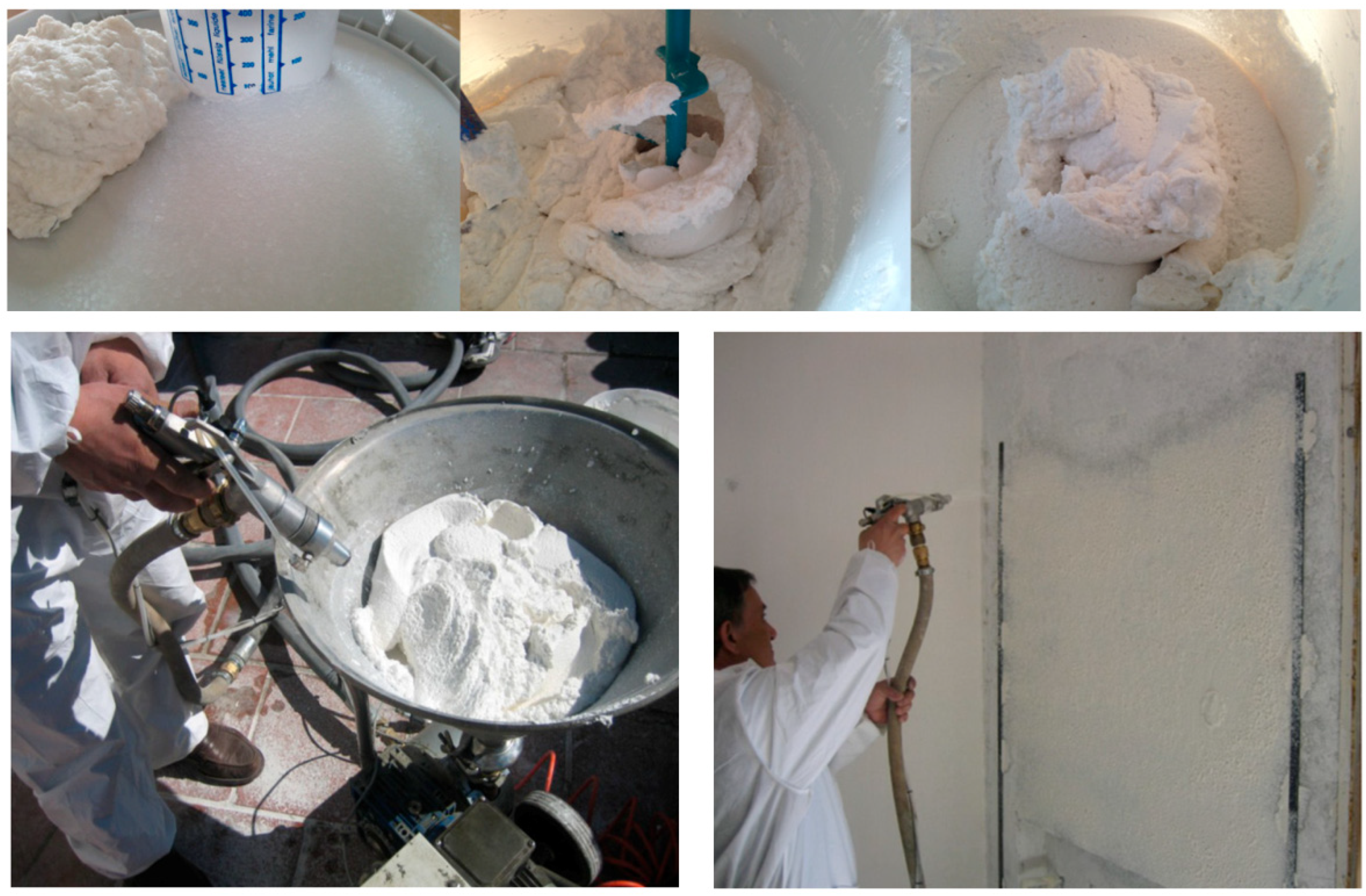
Figure 6. Aerogel-based plaster in building constructions [27].
3.3. Closed-Cell Foam
Closed-cell foam is a spray insulation with completely enclosed cells that are pressed together to prevent air and moisture entrapment within the foam [2]. The density and thermal conductivity of closed-cell foams are 16–55 kg/m3 and 0.025–0.048 W/m·K, respectively [2]. The main weakness of these foams is that their thermal conductivity varies rapidly when they become moist [2][28]. Recent technological advancements have tended to manufacture thin insulating materials by limiting bubble size and foam gas injection, resulting in stiff and stable insulating materials that occupy 40% less occupied area than fibreglass at the same thermal resistance [29].
In building applications, closed-cell foam can be utilised as a hard surface material, and it is appropriate for exterior walls (but not cavity walls) in dry climates [28]. Closed-cell foam has no significant uncertainties about how well it performs as a surface spraying material. Thus, the focus of future studies should be on durability and fire resistance. Further investigation is required to determine whether cracking, performance deterioration, and fire risk exist in some severe circumstances.
3.4. Vacuum Insulation
Vacuum insulation board is a novel environmentally friendly, high-efficiency insulation material with thermal conductivity of one-fifth to one-tenth of that of traditional insulation materials. Vacuum insulations are gradually being employed in several applications, such as construction (Figure 7), refrigerators, cold storage, pipeline insulation, cold chain logistics, etc., due to their excellent properties [30]. Using expanded cork powder as an inexpensive substitute for fumed silica, Jiandong Zhuang et al. developed expanded cork/fumed silica composites with a hierarchical porous structure as the core of vacuum insulation panels with a thermal conductivity as low as 0.006 W/m·K [26].
In the most recent thermal insulation technology, vacuum insulation panels with super-layered glass fibre cores are produced by centrifugal spin blow moulding, and the thermal conductivity of a 3 mm vacuum insulation board reaches 1.25 mW/m·K, significantly improving the service life of the insulation board. Their further advantage is lower energy consumption as well as lower cost compared to traditional wet processes [31].
Vacuum insulation materials, on the other hand, can be used to replace vacuum glasses in building windows for improved thermal insulation. The results demonstrate that the insulating material with a vacuum pressure of 10 pa in the interlayer can provide a better insulation effect, but at a much higher cost [32]. Due to the instability of the vacuum environment, residual gases such as N2, O2, H2O, and H2 often appear in the vacuum space after the material is used for a certain period. Vacuum insulation products that often employ getters ensure that the material properties remain unchanged after long-term usage, which improves the service life of vacuum insulation materials [33]. A vacuum insulation board is an excellent insulation material; however, it is essential to ensure the structure of the insulation board is stable since its elements are insulated by vacuum. Reducing manufacturing cost and prolonging service life have always been major research topics [34][35].
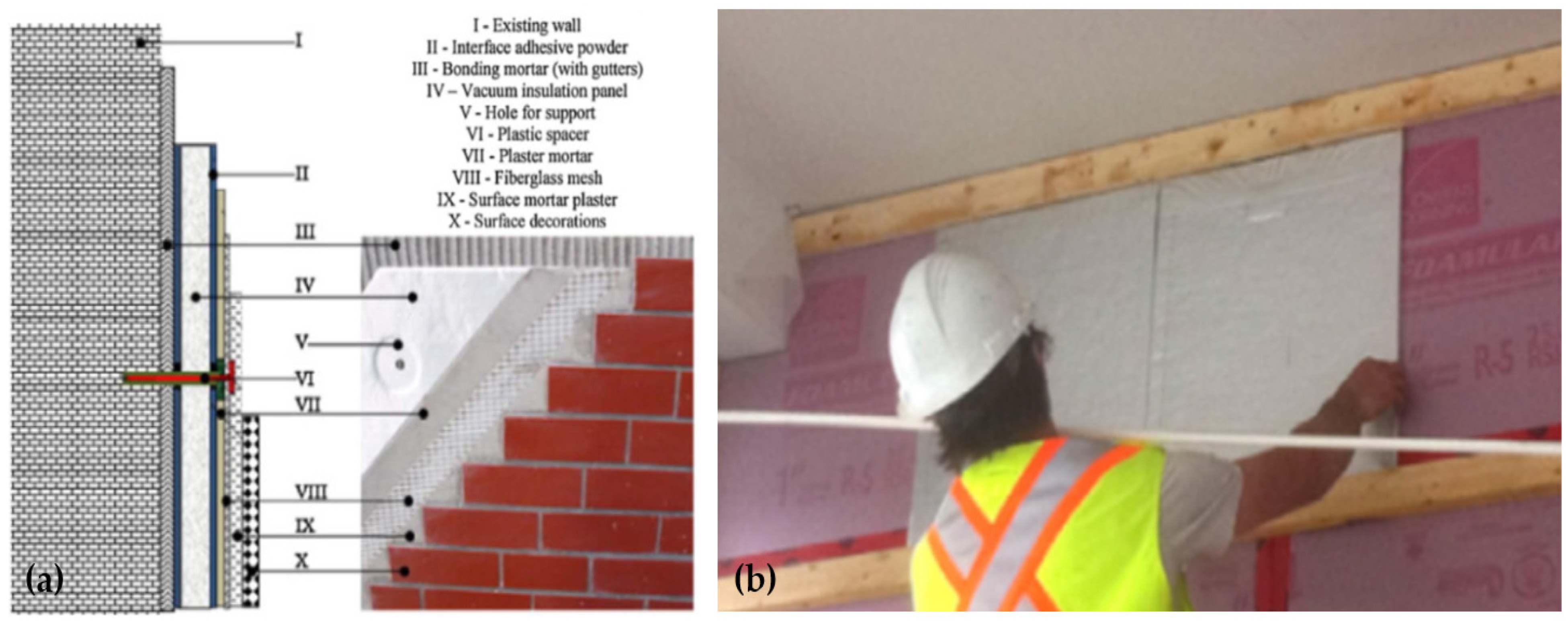
Theoretically, vacuum insulation should have the best thermal insulation performance, but more work is required to ensure durability in real-world applications. A strong and lightweight seal material is also required as the frame to maintain the vacuum inside the panel. Besides, the high cost is a barrier that must be solved for future developments.
3.5. Reflective Insulation
Thermal insulation systems commonly used in buildings reduce conductive and convective heat transfers between the interior and the outside of the building. Reducing the impact of indoor and outdoor radiative heat transfer in buildings is also a way to achieve building energy efficiency [38]. Reflective insulation systems, internal radiation control coatings, and inflatable panels are examples of building insulation technologies that use the reflective principle [39]. The performance of reflective insulation systems varies in different climates. As reported, reflective insulations can significantly reduce internal degree days and thermal energy in cold, temperate humid, hot arid, and hot humid climates [40].
By providing a reflective space interlayer in the middle of the insulation material, thermal insulation performance can be effectively improved. The latest reflective insulation technology incorporates wood fibreboard and an intermediate air layer with a highly reflective interface, which is used to reflect long-wave infrared radiation, with seven layers of multi-air layer insulation with thermal conductivity of about 0.033 W/m·K. Compared with the available building insulation materials in the market, reflective insulations pose a higher insulation potential [41].
In terms of the insulating concept, reflective insulation differs from conventional insulation materials. It reduces the heat radiation absorbed by the building via reflecting heat radiation, achieving the purpose of thermal insulation. The air wall is often covered with a layer of aluminium foil. This foil is also employed as an extra heat preservation mechanism, which functions in a variety of composite heat preservation boards and insulation membranes.
4. Sustainable Insulation Materials
As mentioned earlier, the building and construction sector has a number of undesirable environmental issues associated, like using 40% of the world’s natural resources and producing over 45% of waste disposal [42]. Inorganic insulation materials, despite their widespread use in buildings for wall insulation due to their fire-resistant benefits, have major environmental impacts [43]. On the other side, organic insulation materials, such as EPS and XPS, are flammable and can emit large volumes of toxic gases when heated to around 80 °C [44]. Since building walls contain an extensive area in comparison to other components (floors, roofs, attics, etc.), it is essential to transition to safe, sustainable materials in order to address current safety issues and environmental concerns. In this section, a variety of sustainable insulation materials are reviewed and discussed.
4.1. Bio-Insulation Materials
Bio-insulation materials were first studied in 1974 [45]. Researchers and professionals have then widely invested in bio-insulation material development, especially after 2003. The materials studied mainly include coconut, wood (e.g., plywood [46], sawn timber [47], laminated wood [48], particleboard [49], and biocomposites [50][51]), hemp, sunflower, corn, flax fibre, straw, etc [52].
Indra Mawardi et al. [53] recently conducted a research study on the insulating effectiveness of oil palm wood binderless panels. It is reported that such bio-insulation panels with a particle palm wood size of 0.42–0.84 mm offer good thermal insulation and sound absorption capabilities. Xuhao Zhang et al. [54] studied a thermal insulation cement made of magnesium phosphate cement and corn stalk, and based on their results, the walls with this material can better regulate temperature and relative humidity changes, improving the indoor environment’s comfort. Shuang Wang et al. [55] experimentally investigated a rice husk/geopolymer foam composite. They showed that the new composite mixed with rice husk is of satisfactory performance to be used in buildings for energy-saving purposes. Lifang Liu et al. [52] assessed the thermal, mechanical, and hydraulic properties as well as the micromorphological effects of a bio-insulation material in which wheat straw and geopolymers were used as aggregate and binders, respectively. According to the findings, this new bio-insulation material has acceptable thermal and mechanical qualities and can be utilised in wall insulation applications, especially for prefabricated buildings. Dang Mao Nguyen et al. [56] carried out experiments on thermal insulation boards made of six different biological types of glue and bamboo fibres. They concluded that 70% bamboo fibre plus 30% bone and sodium lignosulfonate is an optimal ratio for their insulation boards to efficiently control the humidity and conserve building energy.
Although there have been many breakthroughs in bio-insulation thermal performance, the presence of organic components in biomass materials calls for additional research regarding durability, insect resistance, corrosion resistance, and flame retardancy. As a sustainable building material, the use of bio-insulation materials in construction is highly encouraged.
4.2. Agriculture Waste Materials
Agricultural waste insulation materials, which are primarily natural or waste materials, abundant in resources, inexpensive, and free of complicated production processes, significantly contribute to achieving sustainable development goals in the building and construction sector.
Ana Ramos et al. [57] developed a particleboard using polyvinyl acetate and corncob and studied its thermal performance and environmental impacts. The experimental results revealed that agricultural waste and by-products are of desired thermal performance, allowing them to be used as promising eco-friendly building insulation materials. Nga et al. [58] applied a freeze-drying procedure to produce thermally insulating and flexible cellulose-based aerogel composites using pineapple leaves and cotton waste fibres. In this study, the authors investigated the material’s density, porosity, morphology, durability, and thermal properties to ensure whether such developed biomass aerogel composites can be used for insulation purposes in real situations. Baiba Gaujena et al. [59] analysed the hydrothermal properties of hemp insulation boards in which the local agricultural residues can also be used. They found that the effect of binder powder on thermal conductivity is minimal, however, the value obtained using hemp is much higher than that of traditional insulation materials.
4.3. Recycled Insulation Materials
Converting available waste sources into high-value products is critical to promote sustainable development as well as to reduce production costs. Reviewing the literature, there is an increasing number of studies on the utilisation of recycled materials for wall insulations [60]. In a study conducted by Nga et al. [60], the biodegradable xanthan gum solution was mixed with the fibre skeleton as a binder and freeze-dried, leaving a hollow porous structure. This material is reported as an environmentally benign and cost-effective insulation for building applications. Moghaddam Fard et al. [61] developed a new thermal insulation material out of recycled plastic and polystyrene, sandwiching recycled plastic bags between polystyrene insulation boards for improved thermal insulation performance as well as fire and water resistance; however, compressive strength was sacrificed. Reynoso et al. [62] developed a new type of recycled insulation material with thermal insulation properties comparable to commercial insulation materials using expanded polystyrene waste, cementitious adhesives, plastic additives, and water. Jensen et al. [63] investigated the properties of regenerated cellulose building materials and concluded that insulating materials consisting of regenerated fibres are low-cost, have good thermal and acoustic insulation capabilities, and can be used to replace traditional insulating materials. Overall, the use of recycled materials can provide novel thermal and acoustic insulators with high performance and low cost, which is the future path of insulating material research.
References
- Mueller, A. Recycling mineral wool waste-technologies for the conservation of fiber structure. InterCeram Int. Ceram. Rev. 2009, 58, 378–381.
- Kumar, D.; Alam, M.; Zou, P.X.; Sanjayan, J.G.; Memon, R.A. Comparative analysis of building insulation material properties and performance. Renew. Sustain. Energy Rev. 2020, 131, 110038.
- Schiavoni, S.; D׳Alessandro, F.; Bianchi, F.; Asdrubali, F. Insulation materials for the building sector: A review and comparative analysis. Renew. Sustain. Energy Rev. 2016, 62, 988–1011.
- Fangueiro, R. Fibrous Composite Materials for Civil Engineering Applications; Woodhead Publishing Limited: Philadelphia, PA, USA, 2011.
- Villasmil, W.; Fischer, L.J.; Worlitschek, J. A review and evaluation of thermal insulation materials and methods for thermal energy storage systems. Renew. Sustain. Energy Rev. 2019, 103, 71–84.
- Tatematsu, K.; Hirota, T.; Suzuki, H.; Taniguchi, M.; Nunoi, Y.; Uzawa, T. Influence of temperature and moisture on aging of glass wool. J. Environ. Eng. 2014, 79, 753–762.
- Abu-Jdayil, B.; Mourad, A.H.; Hittini, W.; Hassan, M.; Hameedi, S. Traditional, state-of-the-art and renewable thermal building insulation materials: An overview. Constr. Build. Mater. 2019, 214, 709–735.
- Chen, Z.; Liu, T. Development and application status of glass wool, rock wool, and ceramic wool. In Thermal Insulation and Radiation Control Technologies for Buildings; Springer: Berlin/Heidelberg, Germany, 2022; pp. 129–161.
- Cuce, E.; Cuce, P.M.; Wood, C.J.; Riffat, S.B. Toward aerogel based thermal superinsulation in buildings: A comprehensive review. Renew. Sustain. Energy Rev. 2014, 34, 273–299.
- Zukowski, M.; Haese, G. Experimental and numerical investigation of a hollow brick filled with perlite insulation. Energy Build. 2010, 42, 1402–1408.
- Gao, H.; Liu, H.; Liao, L.; Mei, L.; Shuai, P.; Xi, Z.; Lv, G. A novel inorganic thermal insulation material utilizing perlite tailings. Energy Build. 2019, 190, 25–33.
- Lakatos, A.; Kalmár, F. Analysis of water sorption and thermal conductivity of expanded polystyrene insulation materials. Build. Serv. Eng. Res. Technol. 2013, 34, 407–416.
- Demirel, B. Optimization of the composite brick composed of expanded polystyrene and pumice blocks. Constr. Build. Mater. 2013, 40, 306–313.
- Vo, C.V.; Bunge, F.; Duffy, J.; Hood, L. Advances in thermal insulation of extruded polystyrene foams. Cell. Polym. 2011, 30, 137–156.
- Jelle, B.P. Traditional, state-of-the-art and future thermal building insulation materials and solutions—Properties, requirements and possibilities. Energy Build. 2011, 43, 2549–2563.
- Wu, J.-W.; Sung, W.-F.; Chu, H.-S. Thermal conductivity of polyurethane foams. Int. J. Heat Mass Transf. 1999, 42, 2211–2217.
- Asdrubali, F.; Schiavoni, S.; Horoshenkov, K.V. A review of sustainable materials for acoustic applications. Build. Acoust. 2012, 19, 283–312.
- Hurtado, P.L.; Rouilly, A.; Vandenbossche, V.; Raynaud, C. A review on the properties of cellulose fibre insulation. Build. Environ. 2016, 96, 170–177.
- Kwon, Y.C.; Yarbrough, D.W. A comparison of Korean cellulose insulation with cellulose insulation manufactured in the United States of America. J. Build. Phys. 2004, 27, 185–197.
- Semitekolos, D.; Pardou, K.; Georgiou, P.; Koutsouli, P.; Bizelis, I.; Zoumpoulakis, L. Investigation of mechanical and thermal insulating properties of wool fibres in epoxy composites. Polym. Polym. Compos. 2021, 29, 1412–1421.
- Florea, I.; Manea, D.L. Analysis of thermal insulation building materials based on natural fibers. Procedia Manuf. 2019, 32, 230–235.
- Korjenic, A.; Klaric, S.; Hadžic, A.; Korjenic, S. Sheep wool as a construction material for energy efficiency improvement. Energies 2015, 8, 5765–5781.
- Paneri, A.; Wong, I.L.; Burek, S. Transparent insulation materials: An overview on past, present and future developments. Sol. Energy 2019, 184, 59–83.
- Wong, I.L.; Eames, P.C.; Perera, R.S. A review of transparent insulation systems and the evaluation of payback period for building applications. Sol. Energy 2007, 81, 1058–1071.
- Gao, T.; Jelle, B.P.; Ihara, T.; Gustavsen, A. Insulating glazing units with silica aerogel granules: The impact of particle size. Appl. Energy 2014, 128, 27–34.
- Zhuang, J.; Ghaffar, S.H.; Fan, M.; Corker, J. Restructure of expanded cork with fumed silica as novel core materials for vacuum insulation panels. Compos. Part B Eng. 2017, 127, 215–221.
- Buratti, C.; Moretti, E.; Belloni, E.; Agosti, F. Development of innovative aerogel based plasters: Preliminary thermal and acoustic performance evaluation. Sustainability 2014, 6, 5839–5852.
- Murphy, J. Long-term aging of closed-celled foam insulation. Cell. Polym. 2010, 29, 313–326.
- Fujimoto, H. High Thermal Insulation Technology Contributing to Residential Energy Saving; NISTEP Science & Technology Foresight Center: Tokyo, Japan, 2009.
- Fricke, J.; Heinemann, U.; Ebert, H.P. Vacuum insulation panels—From research to market. Vacuum 2008, 82, 680–690.
- Chen, Z.; Chen, Z.; Yang, Z.; Hu, J.; Yang, Y.; Chang, L.; Lee, L.J.; Xu, T. Preparation and characterization of vacuum insulation panels with super-stratified glass fiber core material. Energy 2015, 93, 945–954.
- Katsura, T.; Memon, S.; Radwan, A.; Nakamura, M.; Nagano, K. Thermal performance analysis of a new structured-core translucent vacuum insulation panel in comparison to vacuum glazing: Experimental and theoretically validated analyses. Sol. Energy 2020, 199, 326–346.
- Di, X.; Xie, Z.G.; Chen, J.; Zheng, S. Residual gas analysis in vacuum insulation panel (VIP) with glass fiber core and investigation of getter for VIP. Build. Environ. 2020, 186, 107337.
- Mao, S.; Kan, A.; Zhu, W.; Yuan, Y. The impact of vacuum degree and barrier envelope on thermal property and service life of vacuum insulation panels. Energy Build. 2020, 209, 109699.
- Liang, Y.; Wu, H.; Huang, G.; Yang, J.; Wang, H. Thermal performance and service life of vacuum insulation panels with aerogel composite cores. Energy Build. 2017, 154, 606–617.
- Aditya, L.; Mahlia, T.; Rismanchi, B.; Ng, H.; Hasan, M.; Metselaar, H.; Muraza, O.; Aditiya, H. A review on insulation materials for energy conservation in buildings. Renew. Sustain. Energy Rev. 2017, 73, 1352–1365.
- Mukhopadhyaya, P.; MacLean, D.; Korn, J.; Van Reenen, D.; Molleti, S. Building application and thermal performance of vacuum insulation panels (VIPs) in Canadian subarctic climate. Energy Build. 2014, 85, 672–680.
- Reflective Insulation Manufacturers Association. Understanding and Using Reflective Insulation, Radiant Barriers and Radiation Control Coatings; Reflective Insulation Manufacturers Association: Phoenix, AZ, USA, 2002.
- Lee, S.W.; Lim, C.H.; Salleh, E.I.B. Reflective thermal insulation systems in building: A review on radiant barrier and reflective insulation. Renew. Sustain. Energy Rev. 2016, 65, 643–661.
- Pourghorban, A.; Kari, B.M.; Asoodeh, H. Holistic survey of reflective insulation systems (RISs) in vertical applications in building envelopes under various climatic conditions. Energy 2022, 242, 122959.
- Malz, S.; Steininger, P.; Dawoud, B.; Krenkel, W.; Steffens, O. On the development of a building insulation using air layers with highly reflective interfaces. Energy Build. 2021, 236, 110779.
- Baharetha, S.M.; Al-Hammad, A.A.; Alshuwaikhat, H.M. Towards a unified set of sustainable building materials criteria. In ICSDEC 2012: Developing the Frontier of Sustainable Design, Engineering, and Construction, Proceedings of the 2012 International Conference on Sustainable Design and Construction; American Society of Civil Engineers (ASCE): Reston, Virginia, 14 November 2012; pp. 732–740.
- Li, Z.; Gong, X.Z.; Wang, Z.H.; Liu, Y. Life cycle assessment of external thermal insulation composite system based on rock wool board. Key Eng. Mater. 2014, 599, 315–318.
- Hidalgo, J.P.; Welch, S.; Torero, J.L. Performance criteria for the fire safe use of thermal insulation in buildings. Constr. Build. Mater. 2015, 100, 285–297.
- Tye, R. Heat transmission in cellulosic fiber insulation materials. J. Test. Eval. 1974, 2, 176–179.
- Mokhtar, A.; Hassan, K.; Aziz, A.A.; Wahid, M. Plywood from oil palm trunks. J. Oil Palm Res. 2011, 23, 1159–1165.
- Abdullah, C.K.; Jawaid, M.; Khalil, H.A.; Zaidon, A.; Hadiyane, A. Oil palm trunk polymer composite: Morphology, water absorption, and thickness swelling behaviours. BioResources 2012, 7, 2948–2959.
- Aizat, A.; Zaidon, A.; Nabil, F.; Bakar, E.; Rasmina, H. Effects of diffusion process and compression on polymer loading of laminated compreg oil palm (elaeis guineensis) wood and its relation to properties. J. Biobased Mater. Bioenergy 2014, 8, 519–525.
- Baskaran, M.; Azmi, N.A.C.H.; Hashim, R.; Sulaiman, O. Properties of binderless particleboard and particleboard with addition of urea formaldehyde made from oil palm trunk waste. J. Phys. Sci. 2017, 28, 151–159.
- Nuryawan, A.; Abdullah, C.; Hazwan, C.M.; Olaiya, N.; Yahya, E.B.; Risnasari, I.; Masruchin, N.; Baharudin, M.; Khalid, H.; Abdul Khalil, H. Enhancement of oil palm waste nanoparticles on the properties and characterization of hybrid plywood biocomposites. Polymers 2020, 12, 1007.
- Chin, K. Mechanical and physical properties of oil palm trunk core particleboard bonded with different UF resins. J. Oil Palm Res. 2014, 26, 163–169.
- Liu, L.; Zou, S.; Li, H.; Deng, L.; Bai, C.; Zhang, X.; Wang, S.; Li, N. Experimental physical properties of an eco-friendly bio-insulation material based on wheat straw for buildings. Energy Build. 2019, 201, 19–36.
- Mawardi, I.; Aprilia, S.; Faisal, M.; Ikramullah; Rizal, S. An investigation of thermal conductivity and sound absorption from binderless panels made of oil palm wood as bio-insulation materials. Results Eng. 2022, 13, 100319.
- Zhang, X.; Chen, B.; Riaz Ahmad, M. Characterization of a novel bio-insulation material for multilayer wall and research on hysteresis effect. Constr. Build. Mater. 2021, 290, 123162.
- Wang, S.; Li, H.; Zou, S.; Zhang, G. Experimental research on a feasible rice husk/geopolymer foam building insulation material. Energy Build. 2020, 226, 110358.
- Nguyen, D.M.; Grillet, A.C.; Diep, T.M.H.; Do, T.V.V.; Thuc, C.N.H.; Woloszyn, M. Hygric and thermal insulation properties of building materials based on bamboo fibers. In Lecture Notes in Civil Engineering; Springer: Berlin/Heidelberg, Germany, 2018; Volume 8, pp. 508–522.
- Ramos, A.; Briga-Sá, A.; Pereira, S.; Correia, M.; Pinto, J.; Bentes, I.; Teixeira, C.A. Thermal performance and life cycle assessment of corn cob particleboards. J. Build. Eng. 2021, 44, 102998.
- Do, N.H.N.; Tran, V.T.; Tran, Q.B.M.; Le, K.A.; Thai, Q.B.; Nguyen, P.T.T.; Duong, H.M.; Le, P.K. Recycling of pineapple leaf and cotton waste fibers into heat-insulating and flexible cellulose aerogel composites. J. Polym. Environ. 2021, 29, 1112–1121.
- Gaujena, B.; Agapovs, V.; Borodinecs, A.; Strelets, K. Analysis of thermal parameters of hemp fiber insulation. Energies 2020, 13, 6385.
- Do, N.H.N.; Le, T.M.; Tran, H.Q.; Pham, N.Q.; Le, K.A.; Nguyen, P.T.T.; Duong, H.M.; Le, T.A.; Le, P.K. Green recycling of fly ash into heat and sound insulation composite aerogels reinforced by recycled polyethylene terephthalate fibers. J. Clean. Prod. 2021, 322, 129138.
- Moghaddam Fard, P.; Alkhansari, M.G. Innovative fire and water insulation foam using recycled plastic bags and expanded polystyrene (eps). Constr. Build. Mater. 2021, 305, 124785.
- Reynoso, L.E.; Carrizo Romero, Á.B.; Viegas, G.M.; San Juan, G.A. Characterization of an alternative thermal insulation material using recycled expanded polystyrene. Constr. Build. Mater. 2021, 301, 124058.
- Jensen, M.S.; Alfieri, P.V. Design and manufacture of insulation panels based on recycled lignocellulosic waste. Clean. Eng. Technol. 2021, 3, 100111.
More
Information
Subjects:
Engineering, Civil
Contributors
MDPI registered users' name will be linked to their SciProfiles pages. To register with us, please refer to https://encyclopedia.pub/register
:
View Times:
7.2K
Revisions:
2 times
(View History)
Update Date:
11 Jan 2023
Notice
You are not a member of the advisory board for this topic. If you want to update advisory board member profile, please contact office@encyclopedia.pub.
OK
Confirm
Only members of the Encyclopedia advisory board for this topic are allowed to note entries. Would you like to become an advisory board member of the Encyclopedia?
Yes
No
${ textCharacter }/${ maxCharacter }
Submit
Cancel
Back
Comments
${ item }
|
More
No more~
There is no comment~
${ textCharacter }/${ maxCharacter }
Submit
Cancel
${ selectedItem.replyTextCharacter }/${ selectedItem.replyMaxCharacter }
Submit
Cancel
Confirm
Are you sure to Delete?
Yes
No


